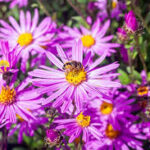
Flowers have been integral to human cultures and traditions throughout history, symbolizing beauty, renewal, and various emotions. From weddings and funerals to religious ceremonies and festivals, the use of flowers in rituals spans diverse cultures worldwide. In this extensive exploration, we delve into the rich tapestry of ceremonies and traditions that celebrate the significance of flowers across different societies.
**1. Weddings**
Flowers play a central role in weddings, symbolizing love, purity, and new beginnings. Bridal bouquets, boutonnieres, and floral decorations adorn wedding venues, conveying the couple’s style and sentiment. Popular wedding flowers like roses, lilies, and peonies are chosen for their meanings and aesthetics. In some cultures, specific flowers carry traditional symbolism; for example, orange blossoms signify fertility in Western weddings, while red flowers symbolize good luck in Chinese weddings.
**2. Funerals and Memorials**
Flowers hold deep significance in funeral rites and memorials, offering solace and honoring the deceased. Sympathy flowers, wreaths, and funeral sprays express condolences and convey emotions of remembrance and respect. White flowers, such as lilies and chrysanthemums, are commonly used in funerals across cultures to symbolize purity and rebirth. In some traditions, specific flowers like marigolds or lotus blossoms hold religious or spiritual significance in memorial rituals.
**3. Religious Festivals**
Many religious festivals incorporate flowers into sacred rituals and ceremonies as offerings to deities or symbols of devotion. In Hinduism, flower garlands (mala) are offered to gods and goddesses during puja (worship) ceremonies, symbolizing devotion and auspiciousness. In Buddhism, lotus flowers symbolize purity and enlightenment, often used in temple offerings and meditation practices. Flowers such as roses, jasmine, and incense flowers hold significance in Christian, Islamic, and other religious traditions as symbols of faith and reverence.
**4. Seasonal Celebrations**
Flowers feature prominently in seasonal festivals and celebrations around the world, marking the cycles of nature and agricultural traditions. Cherry blossoms festivals (hanami) in Japan celebrate the arrival of spring, while flower carpets (alfombras de flores) during Corpus Christi in Spain and Latin America showcase intricate floral designs. In India, the festival of Holi involves the playful throwing of colored powders and flowers, symbolizing the triumph of good over evil and the arrival of spring.
**5. Cultural Traditions**
Flowers are woven into the fabric of cultural traditions, representing heritage, identity, and social customs. In Hawaii, the giving of leis (flower garlands) symbolizes hospitality and aloha spirit. In Mexico, marigolds are used during Dia de los Muertos (Day of the Dead) to honor deceased loved ones. The use of flowers in traditional dances, ceremonies, and rites of passage reflects the unique cultural expressions and connections to nature across societies.
**6. Symbolism and Meanings**
Flowers are imbued with symbolism and meanings that vary across cultures and contexts. Red roses symbolize love and passion in Western cultures, while white flowers represent purity and reverence. In Chinese culture, peonies symbolize prosperity and honor, while chrysanthemums are associated with longevity and resilience. The language of flowers (floriography) assigns specific meanings to different blooms, allowing people to convey sentiments through floral gifts and arrangements.
**7. Healing and Well-Being**
Flowers have therapeutic properties and are used in healing practices and holistic therapies. Aromatherapy harnesses the scents of flowers like lavender and chamomile to promote relaxation and stress relief. Herbal medicines derived from flowers, such as calendula and echinacea, have been used for centuries to treat various ailments. Cultivating and enjoying flowers in gardens and indoor spaces contributes to mental well-being and emotional balance.
**8. Art and Craft**
Flowers have inspired artists and artisans across disciplines, from painting and sculpture to textile design and floral arrangements. Floral motifs and patterns adorn traditional crafts, textiles, and architectural elements in many cultures. Ikebana, the Japanese art of flower arranging, emphasizes harmony, balance, and simplicity. Floral festivals and exhibitions showcase the artistry and cultural significance of flowers as a medium of creative expression.
**9. Environmental Conservation**
Ceremonial practices involving flowers highlight the connection between culture and nature, fostering appreciation for biodiversity and environmental stewardship. Sustainable practices in floral cultivation and trade support conservation efforts, ensuring the preservation of native flora and habitats. Community-led initiatives promote the use of locally sourced flowers and traditional techniques to minimize ecological impacts and preserve cultural heritage.
**10. Future Trends and Innovations**
As societies evolve, new trends and innovations emerge in the use of flowers for ceremonies and traditions. Eco-friendly weddings prioritize sustainable floral choices and practices, such as using seasonal and locally grown flowers. Digital technologies and virtual experiences enable global participation in floral festivals and cultural events. Innovations in floral design and horticulture continue to shape the future of ceremonial practices involving flowers.
In summary, flowers are woven into the fabric of human existence, enriching rituals, traditions, and cultural expressions worldwide. Their symbolic meanings, aesthetic appeal, and therapeutic properties transcend borders, connecting people to nature and each other. By honoring and preserving floral traditions, we celebrate the enduring beauty and significance of flowers in our lives.
**Ceremonies and Traditions Involving Flowers (Part 2)**
In this continuation of our exploration into the captivating world of ceremonies and traditions involving flowers, we delve deeper into the diverse cultural practices and symbolic meanings associated with floral customs across different regions and communities.
**11. Day of the Dead (Dia de los Muertos)**
In Mexico and other Latin American countries, the Day of the Dead is a significant cultural celebration honoring deceased loved ones. Marigolds (cempasúchil) play a central role during this festival, adorning altars (ofrendas) and gravesites to guide spirits back to the world of the living. The vibrant orange and yellow hues of marigolds symbolize the sun and are believed to attract souls with their fragrance. The Day of the Dead is a time of remembrance, reunion, and celebration of life, blending indigenous traditions with Catholic influences.
**12. Chinese New Year (Spring Festival)**
During Chinese New Year festivities, flowers hold symbolic meanings that signify prosperity, good fortune, and happiness for the coming year. Plum blossoms, symbolizing perseverance and hope, are popular decorations, while peonies represent wealth and honor. The vibrant red color of flowers like azaleas, narcissus, and orchids symbolizes luck and prosperity. Floral arrangements and displays adorn homes, temples, and public spaces, ushering in the new year with auspicious symbols.
**13. Hanami (Cherry Blossom Viewing)**
Hanami is a cherished Japanese tradition celebrating the transient beauty of cherry blossoms (sakura) in spring. Families and friends gather beneath blooming cherry trees to admire the delicate pink and white blossoms, enjoying picnics and festivities. Hanami represents the fleeting nature of life and the appreciation of natural beauty. Cherry blossoms are also associated with the samurai’s code of honor (bushido), symbolizing the transient and ephemeral nature of existence.
**14. Thai Songkran Festival (Water Festival)**
During the Thai New Year (Songkran) festival, flowers play a vital role in traditional rituals and celebrations. Fragrant jasmine flowers are used to make floral water offerings, symbolizing purification and blessings. Floral garlands (phuang malai) made from marigolds, roses, and orchids are offered as tokens of respect to elders and revered figures. The water-throwing festivities during Songkran symbolize cleansing and renewal, marking the arrival of the Thai lunar new year.
**15. Indian Festivals (Diwali, Holi, and Navratri)**
Flowers feature prominently in various Indian festivals, adding color and symbolism to religious and cultural celebrations. During Diwali (Festival of Lights), marigold garlands and floral rangoli designs adorn homes and temples, symbolizing prosperity and auspiciousness. Holi, the festival of colors, involves playful festivities with colored powders and water, accompanied by offerings of fragrant flowers. Navratri, dedicated to the Hindu goddess Durga, includes floral decorations and garlands as offerings of devotion.
**16. English May Day Celebrations**
In England and other parts of Europe, May Day celebrations involve traditional customs with flowers and greenery. Maypole dancing is accompanied by floral wreaths and garlands, symbolizing fertility and the arrival of spring. Hawthorn blossoms (mayflowers) are used to decorate maypoles and village greens, marking the return of warmth and abundance after winter. May Day festivities highlight the interconnectedness of nature and community in seasonal rituals.
**17. Japanese Tea Ceremony (Chanoyu)**
The Japanese tea ceremony (chanoyu) incorporates the art of flower arranging (ikebana) as an integral element of aesthetic appreciation and mindfulness. Ikebana emphasizes harmony, balance, and simplicity in floral compositions, using seasonal flowers and natural materials. The arrangement of flowers in tea rooms reflects the changing seasons and evokes a sense of tranquility and contemplation. Flowers like cherry blossoms, chrysanthemums, and bamboo reflect the principles of wabi-sabi (imperfection and impermanence).
**18. British Royal Weddings**
Floral traditions are showcased in grandeur during British royal weddings, where elaborate floral arrangements and bouquets symbolize elegance and regal splendor. White garden roses, lilies of the valley, and myrtle are favored choices, carrying symbolic meanings of love, purity, and fidelity. The royal wedding bouquet often includes sprigs of myrtle, a tradition dating back to Queen Victoria, signifying enduring love and marital happiness.
**19. Indigenous Ceremonies and Sacred Practices**
Indigenous cultures around the world honor the sacredness of nature through traditional ceremonies and rituals involving flowers. Native American tribes use sage, sweetgrass, and cedar for smudging ceremonies, incorporating flowers and herbs to purify and bless sacred spaces. In Australia, Aboriginal traditions include the use of native flora like eucalyptus leaves and wildflowers in ceremonial practices, acknowledging the interconnectedness of land, culture, and spirituality.
**20. Modern Floral Art and Innovation**
Contemporary artists and designers continue to innovate in the realm of floral art, pushing boundaries with avant-garde installations and experimental designs. Floral art exhibitions and installations showcase the creative potential of flowers as a medium of expression and inspiration. Sustainable floral practices, such as using locally sourced and seasonal flowers, reflect a growing awareness of environmental conservation in the art and design community.
In summary, ceremonies and traditions involving flowers embody the universal language of beauty, symbolism, and cultural heritage. From ancient rituals to modern celebrations, flowers inspire connections to nature, community, and spirituality










